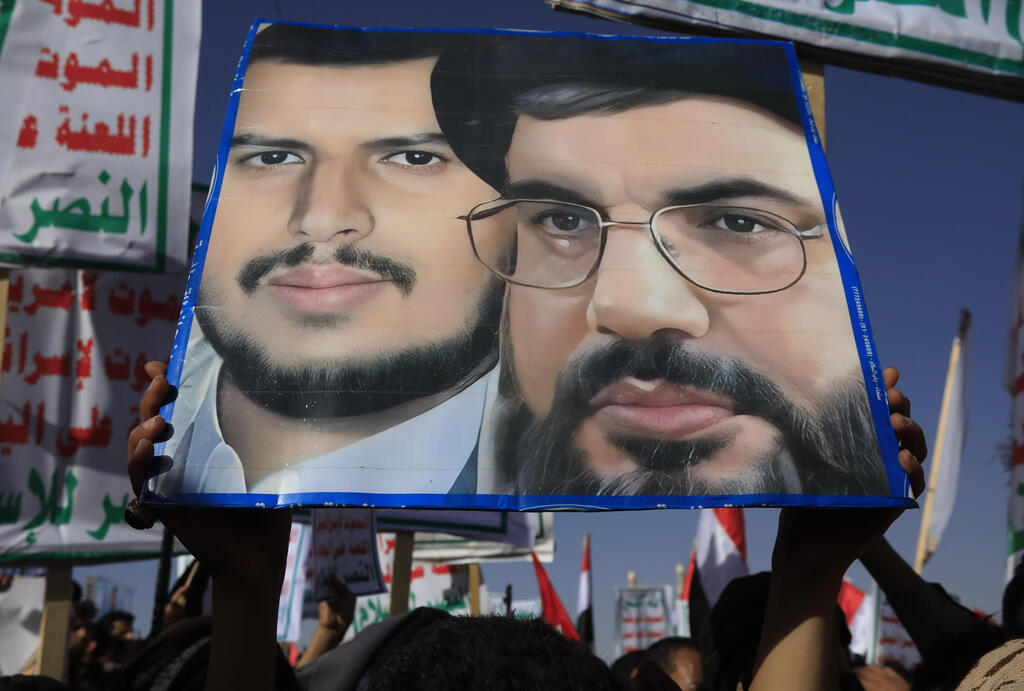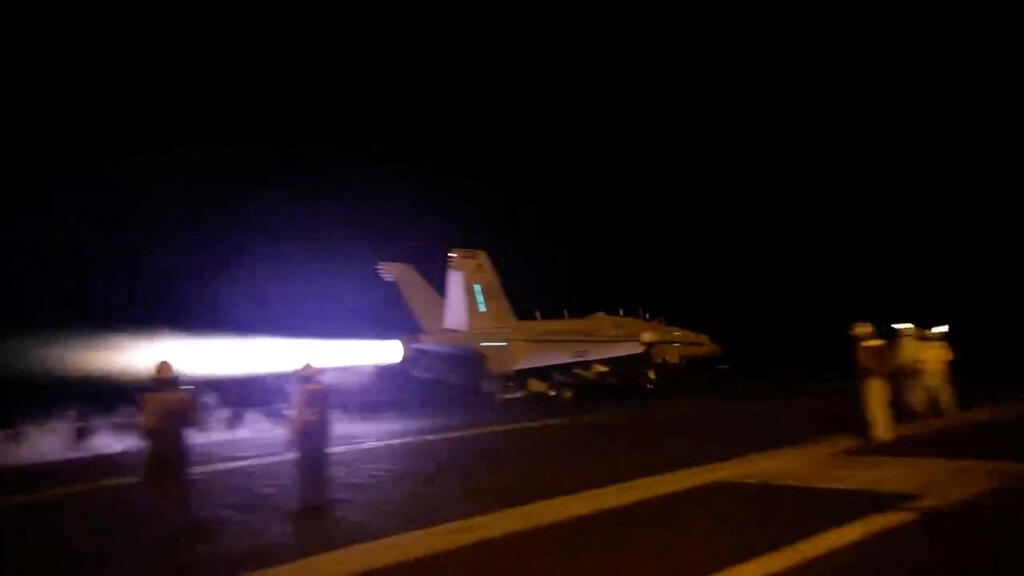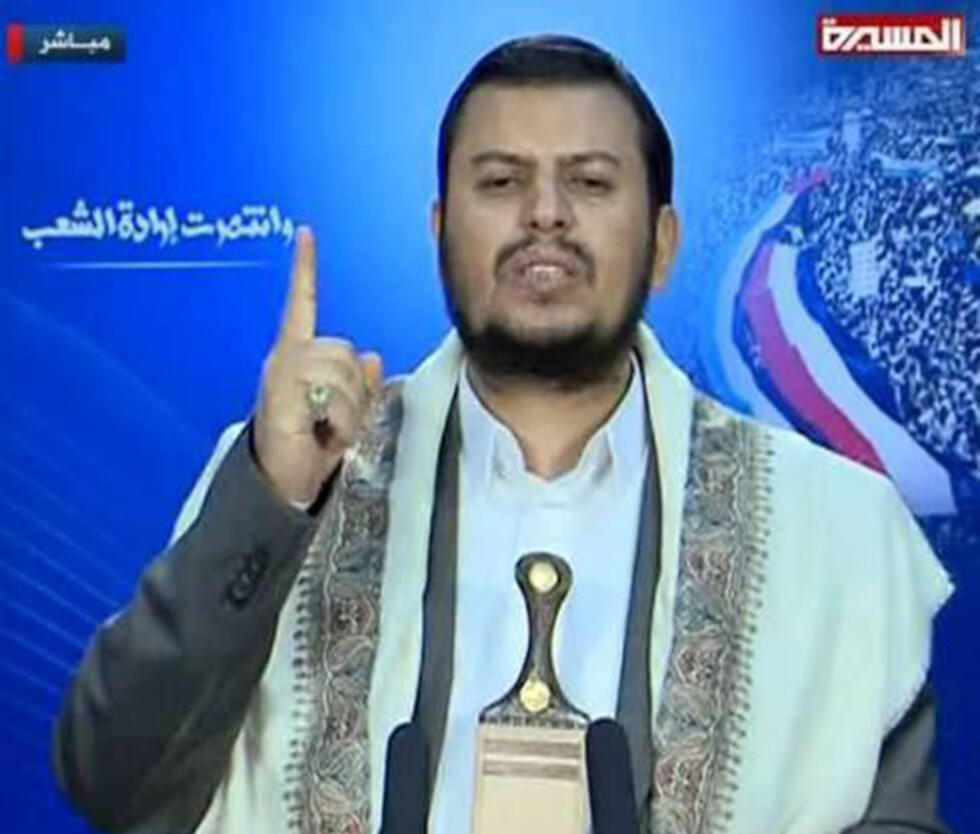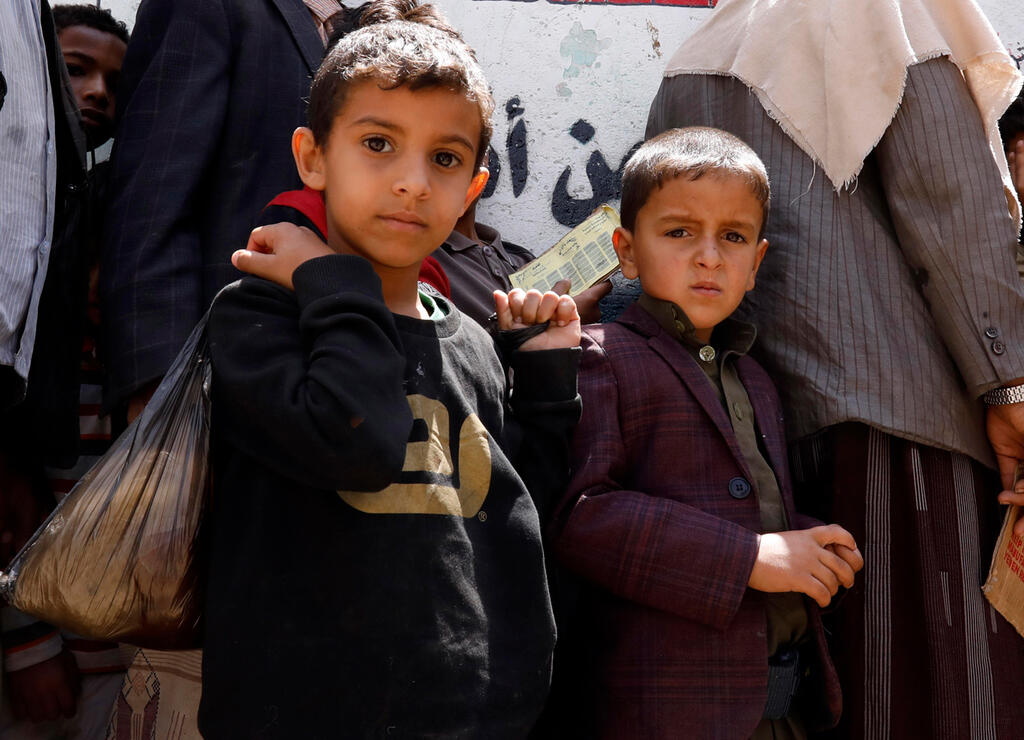Since the beginning of the war, the Houthis have taken upon themselves the position of supporters of the Hamas in Gaza, within the Shiite-Iranian axis, launching attacks on ships sailing of the Yemeni coast and through the Bab al Mandeb Straits on the way to the Suez Canal.
More stories:
Senior members of the group have gained notoriety including their leader, Abdul-Malik al-Houthi. Although the official name of the rebel group is Ansar Allah - Supporters of Allah in Arabic, they are better known as the 'Houthis' which is derived from the leader's family name.
4 View gallery


Yeminis showing support to Hezbollah Secretary-General Hassan Nasrallah and Houthi leader Abdul Malik al-Houthi
(Photo: EPA / YAHYA ARHAB)
Abdul-Malik al-Houthi appears to try to copy the mannerism of another favored leader of an Iranian proxy, the charismatic Hassan Nasrallah who heads the Lebanon-based Hezbollah group that has also taken arms against Israel after the start of the war in Gaza. In recent months, the speeches of the Houthi leader have increasingly resembled those of Nasrallah
Two weeks ago, Nasrallah gave a speech on the occasion of Hezbollah's "Day of the Injured," a day dedicated to Hezbollah's wounded . The speech was broadcast on the Hezbollah-affiliated "Al-Manar" network. A few hours later, Abdul-Malik al-Houthi also gave a speech from Yemen and that was also broadcast on "Al-Manar.
It has become difficult to distinguish between the speeches of the two terrorist leaders. Their manner of speaking, the televised background, and their appearance, strengthen the resemblance. If Nasrallah speaks twice a week, so does the Houthi leader. If Nasrallah surprises his viewers with a short speech, the Houthi leader does the same. Their speeches are full of repetitions, threats, and false statements, some of which are completely fabricated, about events they claim are occurring in the Gaza Strip.
Last Thursday, Abdul-Malik al-Houthi gave a short speech and presented the Houthi's unmanned submarine. He noted that the group's escalating attacks on ships in the Red Sea, is due to continued Israeli attacks on Gaza and that the escalation is evident both in the quantity and types of weapons used.
Unlike Nasrallah, the Houthi leader sports a Yemeni Jambiya, the most famous among Arab daggers. It is worn around the waist and symbolizes Yemen's honor and heritage. According to legends it should not be used as a weapon, except as a last resort, when no other weapon is available. The Jambiya symbolizes masculinity, strength, and courage and is usually worn from age 14.
Another difference between Hassan Nasrallah and Abdul-Malik al-Houthi is that the Houthis target not just Israel in response to the Gaza war, but also the U.S. and Britain who aid Israel as well as carry strikes against Houthi military targets. Over the past months, both the Americans and the British have been thwarting Houthi attacks and striking their bases.
4 View gallery


Joint American-British strike on Yemen
(Photo: Reuters/ US Central Command via X / Handout)
Throughout the war, the Houthis have had to show the support of the Yemeni people. Every Friday, the they post videos of crowds demonstrating in various areas in Yemen, in support of Gaza, presenting their actions as the will of the people. On the other hand, Yemen's day-to-day, especially in Houthi-controlled areas, is dire, with local civilians suffering from severe hunger.
In December, the UN World Food Program (WFP) halted assistance to Yemeni families living in areas under Houthi control after failing to reach an agreement with the group on the number of families eligible for aid. According to the WFP, the food supply is almost completely depleted in the Houthi areas. In their latest updates the WFP said that they're working to advance negotiations with the Houthis as well as the legitimate Yemini authorities.





